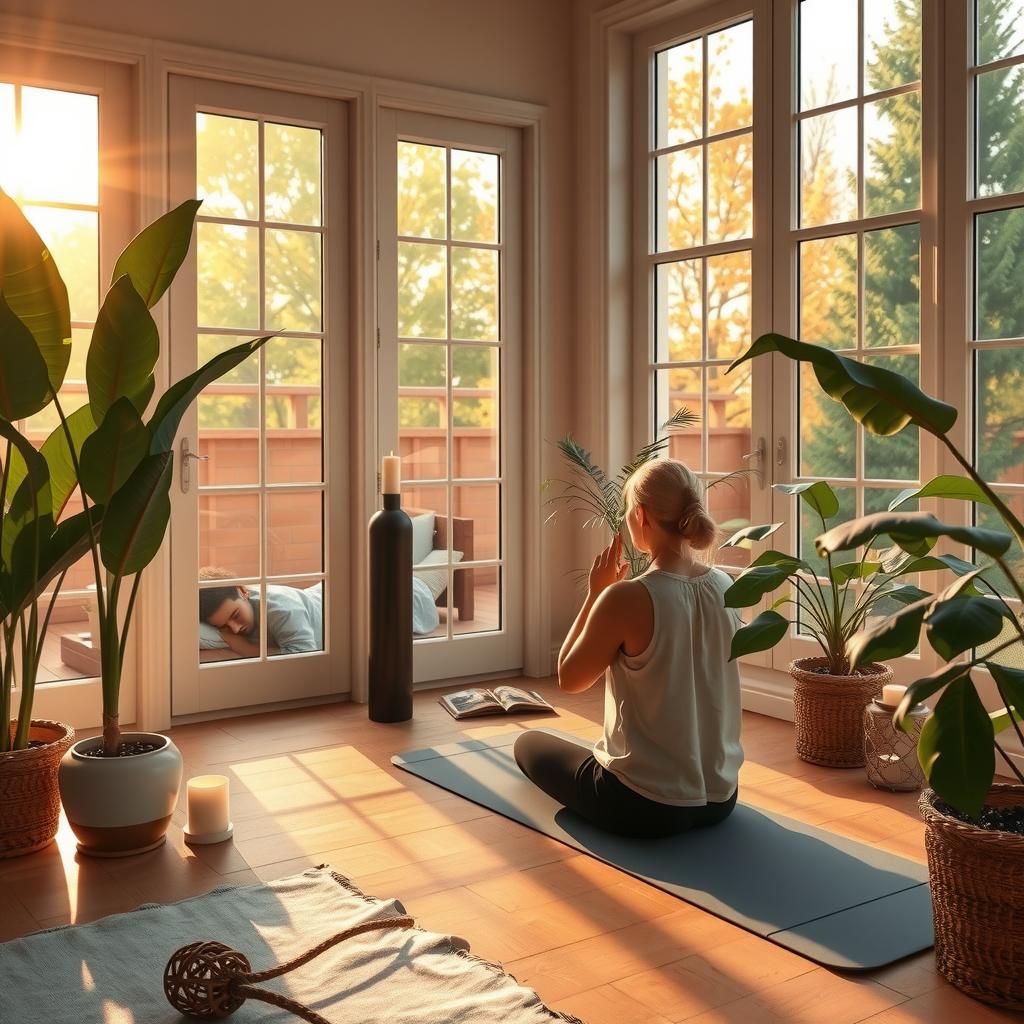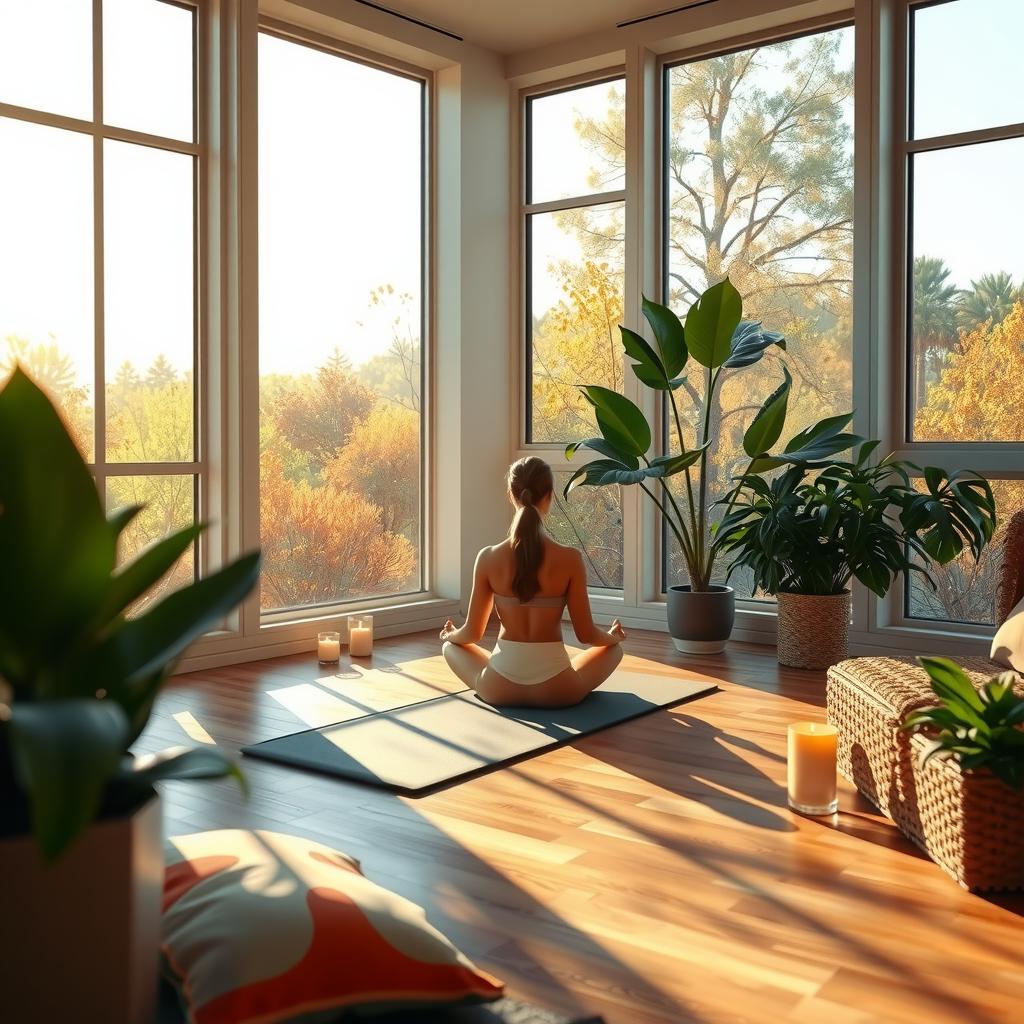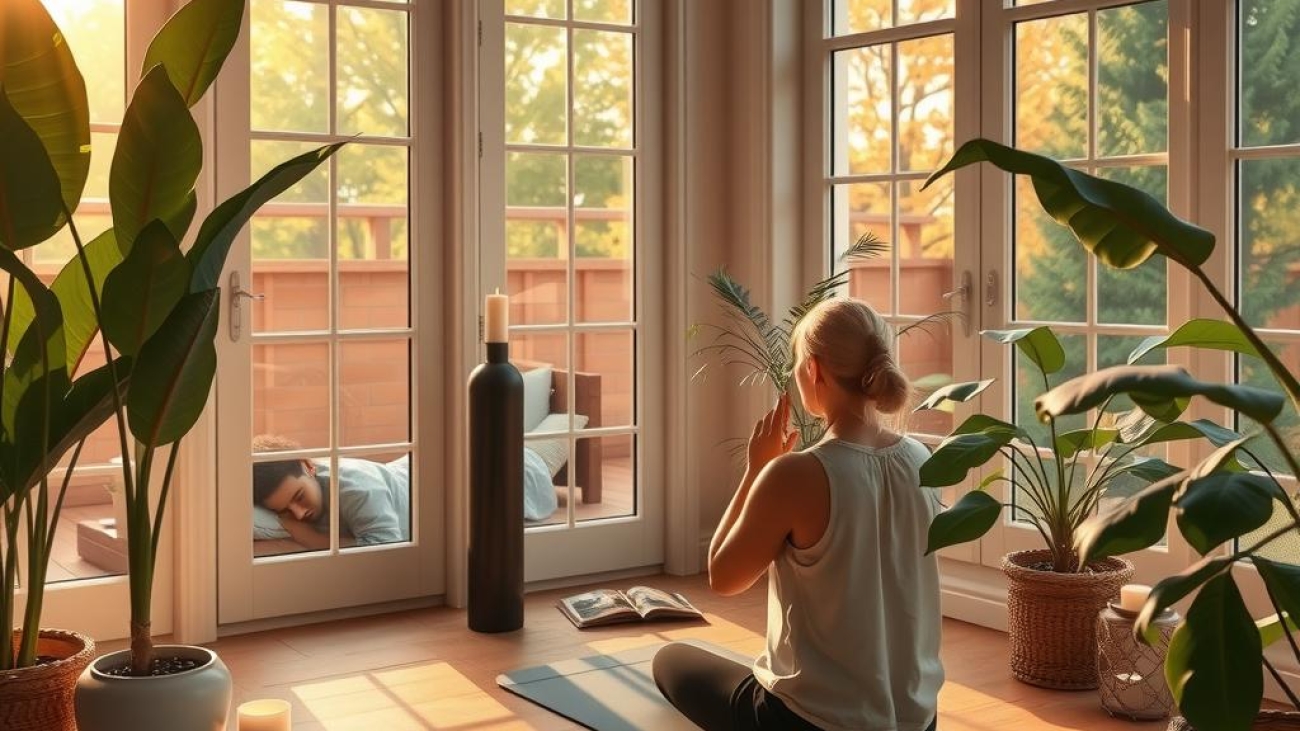As the dawn breaks and sunlight gently spills into our rooms, many individuals find themselves struggling to shake off the remnants of sleep. The phenomenon is especially pronounced during darker months or in regions with limited natural light, leading to a collective yearning for brighter mornings that can uplift spirits and enhance overall well-being. For those contending with seasonal affective disorder or simply looking to improve their morning routine, understanding how to optimize a morning light therapy regimen could be transformative. This article delves into effective strategies for harnessing the power of light therapy while exploring its numerous benefits.
Morning light therapy has emerged as an essential component of wellness routines, particularly for individuals seeking ways to elevate their mood and enhance sleep quality. By strategically incorporating natural light exposure into daily practices, one can significantly counteract feelings of lethargy or depression often triggered by gloomy weather patterns. Furthermore, optimizing this routine not only supports mental health but also aligns bodily rhythms with nature’s cycles—an important factor in achieving holistic wellness.
The good news? There are simple yet impactful steps anyone can take to create an effective morning routine that maximizes the advantages offered by light therapy. Whether it’s adjusting wake-up times, selecting optimal lighting devices designed specifically for therapeutic use, or integrating mindfulness techniques during sessions—subtle adjustments can yield substantial results. As readers embark on this journey towards better mental clarity and emotional resilience through enhanced natural light exposure, they may discover newfound energy levels coupled with improved focus throughout their day.
This exploration aims not just at providing insights but also at sparking inspiration among those interested in elevating their daily lives through practical application of modern science combined with age-old wisdom about sunlight’s restorative powers. By uncovering these optimization tactics tailored toward individual lifestyles and preferences, one can effectively combat seasonal blues while fostering a more vibrant existence year-round—turning what was once merely a struggle against darkness into an enlightening experience filled with hope and vitality.

Key Points:
- Morning Light Exposure: Enhancing Energy and Motivation Morning light therapy serves as a powerful ally for individuals grappling with low energy levels, especially during darker months. By prioritizing natural light exposure in the morning, one can significantly elevate their mood and combat feelings of fatigue. This practice not only addresses common issues related to seasonal affective disorder but also lays the groundwork for improved sleep quality.
- Routine Optimization Techniques: Maximizing Benefits Understanding how to effectively integrate morning light therapy into daily habits is crucial for optimizing its benefits. Individuals who establish a consistent schedule often experience enhanced alertness and focus throughout the day. By recognizing that routine optimization plays a vital role, they can ensure that each session of light therapy maximizes its potential effects on their overall wellness.
- Holistic Health Approach: Transforming Daily Life Incorporating morning light therapy into one’s wellness routine invites transformation beyond mere motivation boosts. Whether through specialized devices mimicking sunlight or simply spending time outdoors at dawn, these adjustments contribute to fostering mental clarity and emotional stability. Embracing this therapeutic approach empowers individuals not just personally but collectively in navigating life’s challenges with vitality and positivity.

Understanding Morning Light Therapy
The Mechanisms and Benefits of Natural Light Exposure
Morning light therapy has emerged as a significant tool for enhancing well-being by harnessing the power of natural light exposure. This therapeutic approach primarily involves the intentional exposure to bright, natural light during the early hours of the day, which plays a critical role in regulating various physiological processes within our bodies. At its core, morning light therapy functions through its unique ability to influence circadian rhythms—our internal biological clock that dictates sleep-wake cycles and hormonal balance. When individuals expose themselves to sunlight shortly after waking up, they are effectively signaling their body to elevate serotonin levels. Serotonin is often referred to as the “feel-good” hormone; it contributes not only to improved mood but also acts as a precursor for melatonin, which enhances sleep quality at night.
The significance of this practice becomes especially pronounced when considering conditions like seasonal affective disorder (SAD), where diminished daylight in winter months can lead to feelings of depression and lethargy. Studies have shown that integrating morning light therapy into one’s routine can mitigate these adverse effects significantly by promoting an increase in daytime alertness and energy levels, thus improving overall mental health outcomes. Furthermore, establishing a consistent routine around morning light exposure can optimize individual wellness strategies and enhance productivity throughout the day.
Moreover, engaging in morning light therapy aligns seamlessly with other wellness practices aimed at holistic health improvement. For instance, incorporating this technique alongside regular physical activity or mindfulness exercises can magnify its benefits—leading not just to elevated spirits but also fostering better concentration abilities during daily tasks. With such compelling advantages on offer from simple lifestyle adjustments involving light therapy benefits, many are discovering newfound resilience against stressors inherent in everyday life.
In practical terms, implementing a regimen centered on morning light therapy does not necessitate elaborate changes; rather it encourages individuals to step outside or sit near windows filled with sunlight first thing each day—a process that’s both accessible and cost-effective. As research continues illuminating how essential natural rhythms are interconnected with emotional stability and cognitive function—this method emerges as an invaluable addition for anyone seeking effective ways to manage their mood while nurturing greater sleep quality over time.
To fully embrace this transformative approach requires recognizing that routine optimization through simple means like strategically timed outdoor engagement could yield profound shifts towards enhanced mental clarity and emotional resilience — ultimately transforming one’s day-to-day experience into one marked by vitality instead of fatigue or gloominess caused by insufficient exposure during darker seasons.
Optimizing Your Routine: Practical Steps for Effective Light Therapy
Integrating Light Therapy into Daily Life for Enhanced Well-Being
Light therapy has emerged as a powerful tool in enhancing overall wellness, particularly for those grappling with challenges such as seasonal affective disorder or simply seeking to improve their mood and sleep quality. By incorporating morning light therapy into one’s daily routine, individuals can harness the natural benefits of light exposure to significantly boost their well-being. To optimize this routine effectively, it is essential to establish a consistent schedule that aligns with natural circadian rhythms. For instance, setting aside time each morning—ideally within the first hour after waking—can enhance alertness and elevate mood throughout the day. A dedicated space near a window where sunlight streams in or utilizing specialized lamps designed for light therapy can ensure maximum exposure during these crucial early hours.
Moreover, it’s important to integrate brief sessions of light exposure throughout the day; even small increments of time spent in natural light can cumulatively benefit energy levels and mental clarity. Utilizing breaks at work or during household tasks allows individuals not only to enjoy moments of mindfulness but also reap the rewards associated with periodic doses of bright light. Tracking moods and energy levels on days when regular natural light exposure occurs versus days without can provide personal insights into how effective this practice is over time. The use of an app or a simple journal may help document these variations, reinforcing commitment while highlighting tangible benefits.
A pivotal aspect often overlooked is ensuring that evening routines are adjusted accordingly; reducing screen time before bed helps maintain optimal sleep hygiene practices that complement the effects of morning therapies. When combined with techniques like winding down through relaxation exercises or reading under soft lighting conditions, individuals create an environment conducive to restful sleep—a vital component for maintaining emotional balance and combating feelings linked to seasonal affective disorder.
Ultimately, by consciously crafting daily habits around light therapy, practitioners will likely find noticeable improvements in both their mood and general quality of life. This proactive approach not only elevates one’s health but also fosters resilience against stressors encountered throughout various seasons—a testament to how thoughtful integration of practical strategies enriches everyday experiences while promoting holistic wellness.
Embracing Holistic Wellness
The Multifaceted Benefits of Light Therapy
In a world increasingly aware of the importance of wellness routines, individuals are exploring various methods to enhance their mental and emotional health. One such method gaining traction is morning light therapy, particularly for those prone to seasonal affective disorder (SAD). This innovative approach goes beyond merely uplifting one’s mood; it holds the potential to influence several aspects of overall well-being, making it an invaluable addition to daily life. By harnessing the power of natural light exposure through structured routines, people can significantly improve their sleep quality and energy levels throughout the day.
Research shows that exposure to bright light in the morning can help regulate circadian rhythms, which play a crucial role in maintaining one’s internal clock. Regularly engaging in this form of therapy not only aids in alleviating symptoms associated with SAD but also fosters an improved sense of vitality and engagement with life. As individuals incorporate light therapy into their daily habits, they often find themselves more alert during waking hours—an essential factor for productivity and mental clarity.
Moreover, consistent use of light therapy has been linked to enhanced mood stability over time. Many who practice this wellness strategy report feeling more balanced emotionally and less susceptible to fluctuations that might otherwise lead them into depressive states during darker months or periods lacking sunlight. In essence, by prioritizing light therapy benefits, users create a proactive defense against seasonal mood dips while fostering resilience against stressors encountered in everyday life.
The psychological implications are profound as well; establishing a routine around morning light exposure encourages individuals not only to wake up earlier but also promotes mindfulness about self-care practices throughout the day. Integrating focused moments for relaxation or reflection within one’s schedule amplifies these effects even further—leading ultimately toward holistic improvement across various dimensions including physical fitness, social connections, and emotional intelligence.
As society continues its shift towards recognizing mental health as equally important as physical health, embracing techniques like morning light therapy becomes paramount for anyone seeking a comprehensive approach toward personal growth and fulfillment. Whether used alone or integrated within broader lifestyle changes aimed at optimizing wellness outcomes—such as exercise regimens or diet improvements—the commitment made today will undoubtedly yield long-term dividends tomorrow.
By investing time into understanding how elements such as natural lighting impact mood enhancement alongside combating conditions like SAD effectively enhances overall quality-of-life experiences while cultivating deeper appreciation for our interconnected existence—all stemming from something so deceptively simple yet powerful: illuminating our mornings with intention-driven choices reflective not just on ourselves—but collectively enhancing community well-being too!
Frequently Asked Questions:
Q: What is morning light therapy and how does it work?
A: Morning light therapy involves the intentional exposure to natural or artificial light shortly after waking. This practice helps regulate the body’s internal clock, improving overall sleep quality and combating issues like seasonal affective disorder. By simulating natural sunlight, individuals can enhance their mood and increase alertness throughout the day.
Q: How can I optimize my morning routine for maximum benefits from light therapy?
A: To optimize a morning routine, it’s important to establish a consistent time for light therapy. Incorporating this practice into daily habits—such as enjoying breakfast near a window or using specialized devices that mimic daylight—can significantly amplify its effects. Regularly engaging in these activities ensures sustained improvements in mood and focus over time.
Q: Are there specific techniques to improve the effectiveness of light therapy?
A: Yes, several techniques can enhance the effectiveness of light therapy benefits. For instance, combining brief outdoor walks during dawn with indoor sessions utilizing bright lights can create a more robust exposure experience. Additionally, ensuring that one’s space is well-lit upon waking further promotes feelings of positivity and vitality throughout the day.

Add a Comment